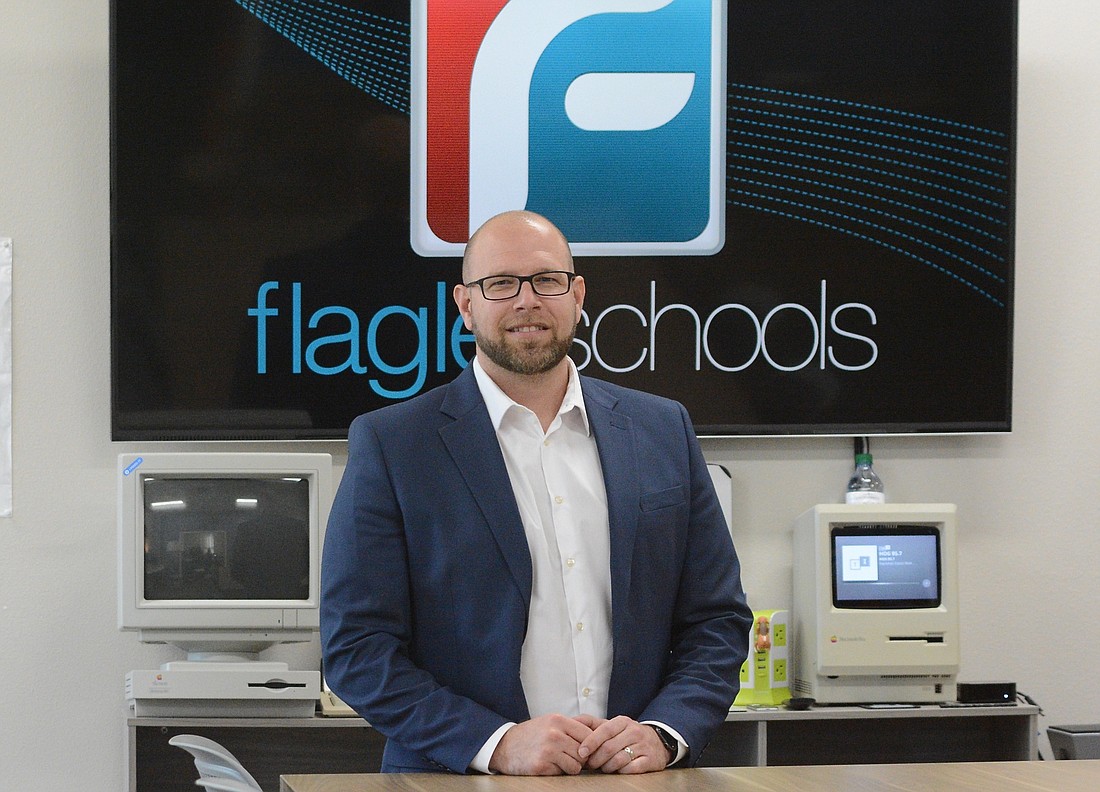- December 27, 2024
-
-
Loading

Loading

For years, Flagler Schools Chief of Technology and Innovation Ryan Deising has worked to help provide every student with a computing device through the district's one-to-one program.
"He’s out in the classrooms, talking to the students, talking to the teachers, looking at the classrooms to really see what's going on and how we’re using the technology and what we could do to change or help make things better."
— TERESA PHILLIPS, Flagler Schools instructional technology coach
The shift to online learning in the spring of 2020 made the impact of that initiative particularly clear.
"The technology in place gave us a huge advantage over what a lot of surrounding districts had," Deising said. "Most districts did not have the computers or infrastructure to support having every student at home, learning remotely. We had those things in place, and we had a team that spent countless hours working … so that they still could supply that top-level education that we're striving for in Flagler Schools."
Deising grew up in the Ormond Beach area and began working for Flagler Schools in 2001 as a technology coordinator, then became a network engineer before becoming moving into leadership roles.
"His institutional knowledge far exceeds anyone about Flagler schools. It’s amazing," said Joe Rizzo, executive director of the Flagler Education Foundation. "When he started, it was two people, and that was the technology department, and he’s grown the department to a Google standard. We have tech offices in every school; we maintain over 20,000 devices on a regular basis. We collect and distribute the devices every year. The amount of stuff his department does is just amazing. Kids show up and get a computer, and people don’t even think about how it happens."
When Deising began working for Flagler Schools, personal technology still involved pagers and Blackberry devices, and many students had limited access to technology outside of a computer lab.
"The amount of technology that students and staff have access to has significantly changed," he said. "I think the biggest impact on Flagler, when it came to technology, was the approval of the half-penny sales tax to implement a one-to-one program in our community. ... We were basically the first district in the state of Florida to get to a one-to-one ratio across elementary, middle and high."
The "one-to-one" refers to the district program that loans MacBooks to high school students and tablets to younger students so that every student has a device for at-home computing — one computer to one student — a major shift from the days when student computing involved rolling computer carts into classrooms and having two students share one computer station.
The one-to-one program was funded by the half-penny sales tax program that Flagler County voters first approved in 2002 and have renewed in successive years. The half-cent tax will be on the ballot for renewal again this year.
Teresa Phillips, Flagler Schools instructional technology coach, has seen two of her own daughters benefit from the one-to-one program as they attended district schools.
"We’re where we are today because of his vision, and he continues to have foresight for the years ahead."
— MARIA McGOVERN, Flagler Schools technology coordinator
"They have that background with the technology that every profession needs; they’re not having to learn that on top of everything else," Phillips said. "It really levels the playing field with all these students. You don’t have that great digital divide that a lot of other districts may have."
Phillips was a teacher for a decade before becoming an instructional technology coach. As classes moved online because of the pandemic, she said, Deising was attentive to teachers' concerns.
"He really listens to teachers and the needs that we have in the classroom," she said. "He always looks at the teachers' and students' needs. He’s out in the classrooms, talking to the students, talking to the teachers, looking at the classrooms to really see what's going on and how we’re using the technology and what we could do to change or help make things better."
When the pandemic began, the district initially planned to take an extended spring break. It quickly became clear that wasn't going to be enough, and staff started preparing for remote learning.
"We took a staff that normally works within our schools and our school buildings, and pivoted that to a centralized-help-desk kind of scenario," Deising said. "We had to cover time ranges that were very large, because we had students that were doing work at 7 a.m. and students that were doing work at 7 p.m.”
Deising's staff created a drive-thru tech support station for families and prepared teachers to teach from home or from blended classrooms in which some students were on campus while others learned from home.
"The instructional technology team really worked with our administrators and teachers in each individual grade level," Deising said. "We really didn’t have a huge opportunity to bring folks in, so most of that was done in a remote setting. So they were getting training in the environment that they would be teaching in."
Maria McGovern, the district's technology coordinator, said Deising's planning had placed the district in a good position when the pandemic began.
"Ryan is very much a solution person, so anything that comes to us with challenges, it’s 'How do we fix this, how do we make this right, how do we turn this around,'" she said. When the pandemic began, she said, "We made some tweaks and changes, but we were already very close to where we needed to be to keep learning 24/7 . ... We’re where we are today because of his vision, and he continues to have foresight for the years ahead."